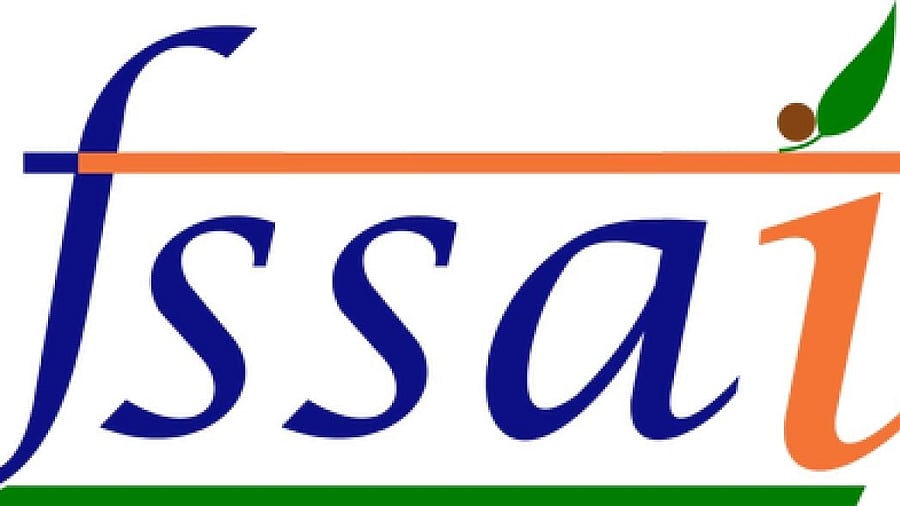
FSSAI logo.
Official website.
Last week, the Supreme Court set a three-month deadline for the Centre to implement food safety norms that make it mandatory to display key information about packaged food items on front of packets/containers, while disposing of a PIL, urging the court to give directions to the Union and states to make mandatory Front-of-Package Warning Labels (FoPL) on packaged foods.
Non-communicable diseases (NCDs) contribute to around 5.87 million deaths -- 60 per cent of all deaths in India. India shares more than two-thirds of the total deaths due to NCDs. One of the main reasons for increasing NCDs is the consumption of unhealthy food high in sugar, salt or saturated fat.
India stands to lose $4.58 trillion by 2030 due to NCDs and mental health conditions. Cardiovascular diseases alone accounting for $2.17 trillion will lead to huge economic losses.
As defined by the WHO, FoPL is a cost-effective way of alerting and warning consumers about unhealthy ingredients such as sugar, salt and fat. It can aid consumers in understanding nutritional quality and help in choosing healthier foods. It works just the way cigarette packets are labelled with pictorial images to discourage consumption.
Across the world, a significant number of countries have implemented FoPL in different formats. However, the Indian food regulator has ignored the aspect of the linkage of NCDs with the consumption of unhealthy food, and the role FoPL could play.
The processes initiated to introduce FoPL in India have a history of more than a decade. In response to a PIL, the Delhi High Court had given an order in September 2013 to the Food Safety & Standards Authority of India (FSSAI) to formulate rules to regulate food High in Fat, Sugar and Salt (HFSS), or junk food. In continuation, an expert group was formed by the FSSAI in 2014. After years of consultations, in 2019, the FSSAI issued the draft Food Safety Standards (Labelling and Display), Regulations, 2019.
During the pandemic, a stakeholder group on FoPL was formed in January 2021, in which I was a member, to fast-track the process of finalising the format and introducing FoPL. Summing up the consultations, under the cover of a survey carried out by IIM-A, commissioned by the FSSAI, ignoring the opposition by consumer organisations and health experts, and yielding to pressure from the industry, in February 2022, the FSSAI decided to introduce Health Star Ratings (HSR) for an initial period of four years, and proposed voluntary implementation of FoPL from mid-2023 to mid-2027. The draft Food Safety and Standards (Labelling & Display) Amendment Regulations 2022 related to FoPL was notified on September 13, 2022.
How ratings work
Studies show that the HSR system, implemented only in Australia and New Zealand, is highly flawed as unhealthy products are still able to get a high score. This is because the rating is based on the overall nutritional value, and the inclusion of healthy ingredients (i.e. fibre, protein and vitamins) cancels out the unhealthy ingredients (i.e. sugar, saturated fats and salt). Hence even a product high in unhealthy ingredients can get a high star
rating, and mislead the consumers. In an industry-pleasing move, the FSSAI had decided to go ahead with a failed FoPL format.
While multiple front-of-package labellings exist with different approaches
and designs interpreting the nutrition present, negative warning labels that easily help the consumers identify unhealthy products have proved to be most effective for discouraging the consumption of junk food and ultra-processed food choices.
Simple, interpretative labels are adopted in countries such as Chile, Canada, Israel, Peru, Mexico, Brazil, and Uruguay. They have played a crucial role in shaping consumer-level food behaviour. The warning label would be ideal for India too as it has proven useful to all consumer categories regardless of age, literacy, language barriers or socio-economic strata.
The FSSAI is mandated for the formulation and enforcement of food safety standards in India. It is expected to act responsibly for the sake of consumers. Instead of yielding to the pressure from the industry, the food regulator should act immediately as per the Supreme Court’s direction in an independent manner. More importantly, openness and transparency should be upheld in the public body which is accountable to the people, whose trust and confidence are key to its effective functioning. This is the time for the FSSAI to act, to ensure the safety of food for the people of India.
(The writer is Director, Centre for Environment and Sustainable Development India)